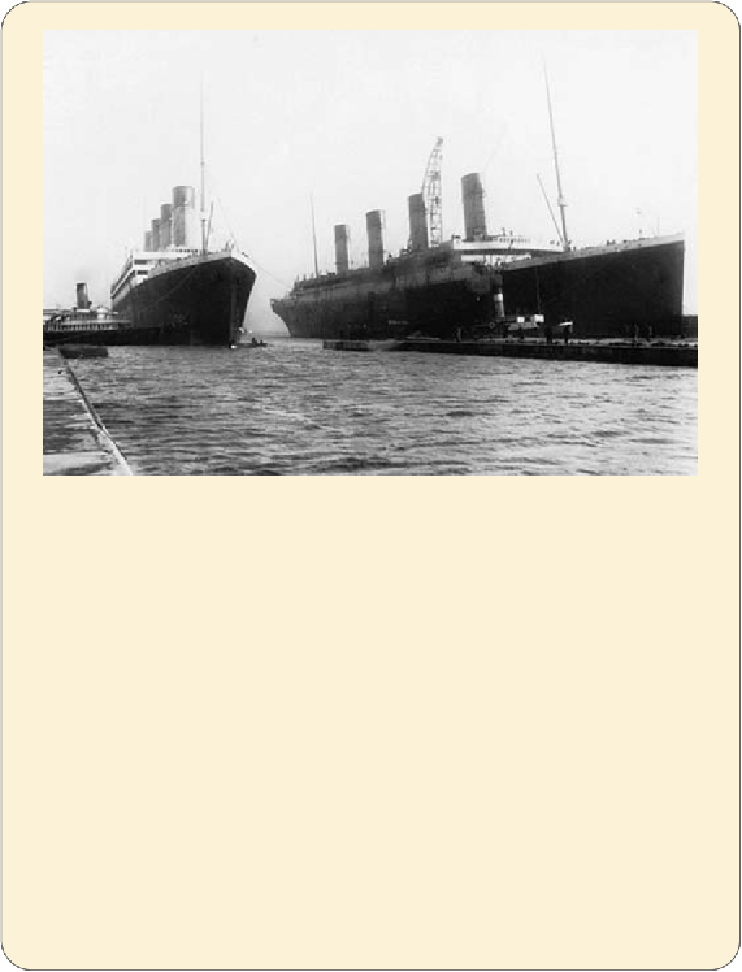Travel Reference
In-Depth Information
Locals thought themselves the best shipbuilders since Noah. The Titanic's sud-
den demise in 1912 is the most famous sea disaster of the modern era. Only 716 of
the 2,260 aboard were rescued; 70 percent of the first-class passengers, with first
dibs on the few lifeboats, survived.
While everyone has heard of the
Titanic,
few people know that it was the middle
sister of three unfortunate ships, each built in Belfast by the prestigious Harland and
Wolff shipyards for the White Star Line.
In 1910, the
Olympic
was the first of the three similar vessels to be launched. It
soon collided with the naval cruiser HMS
Hawke
and returned to Belfast to be re-
paired with parts taken from the still-under-construction
Titanic.
When World War
I began, the
Olympic
served as a troop transport ship. During the war, it struck and
sank a German submarine (the U-103). After the war, it returned to commercial ser-
vice and later collided with the
Nantucket Lightship
(killing seven). The
Olympic
's
last voyage was in 1935, and it was demolished in 1937.
The last of the three to be built was the
Gigantic
in 1914. But after the
Titanic
sank, its name was changed (while still under construction) to
Britannic
...which
was thought to be a luckier name. It was repainted white and converted to a hospital
ship at the start of World War I. In 1915, it was serving in the Aegean Sea when
it hit a mine—or was struck by a torpedo from a U-boat. Fortunately it had more
advanced safety features than its two older sisters—it had enough lifeboats for all
onboard, and was designed to sink more slowly. Luckily, the ship had no patients

